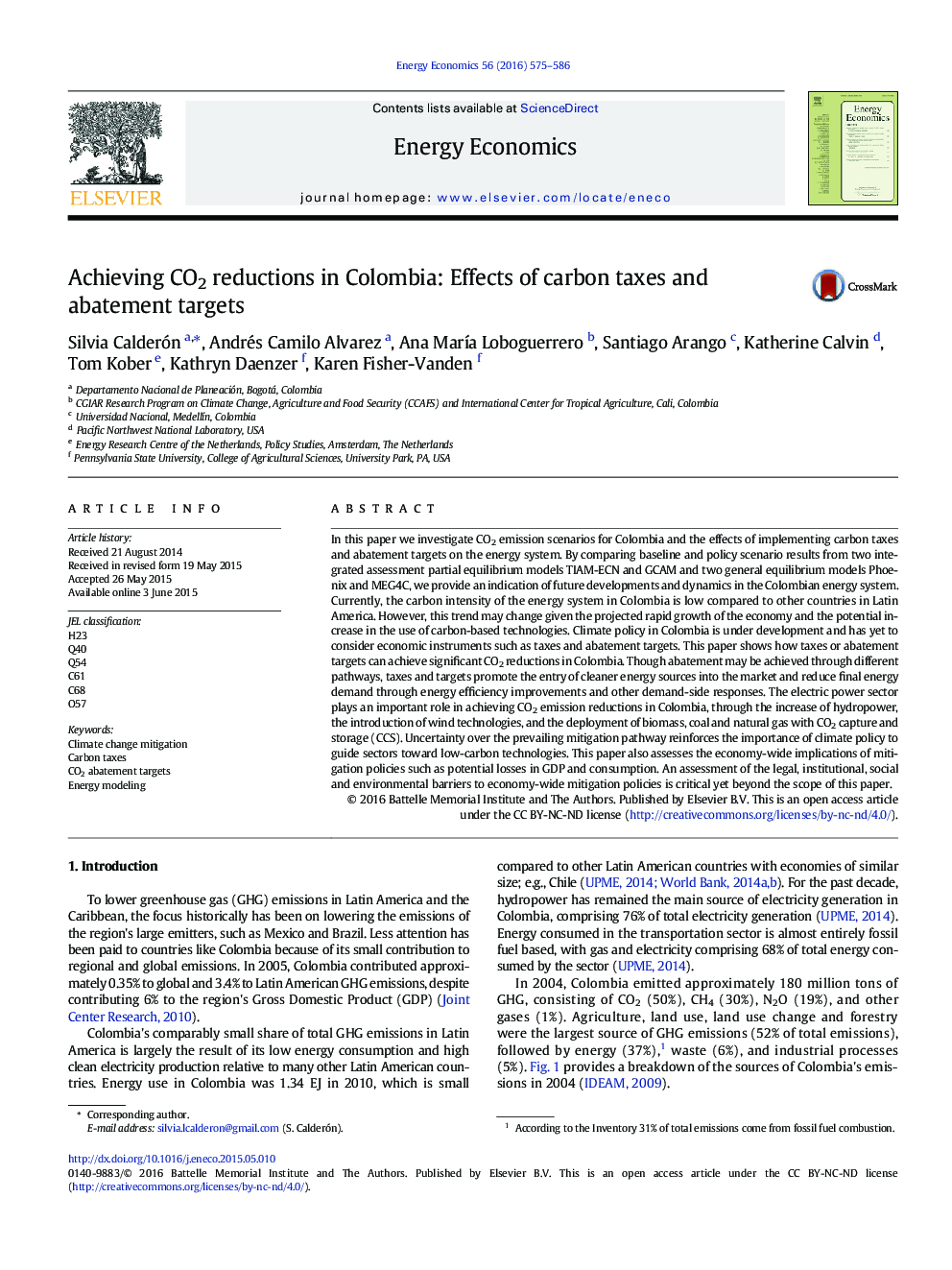| کد مقاله | کد نشریه | سال انتشار | مقاله انگلیسی | نسخه تمام متن |
|---|---|---|---|---|
| 5064007 | 1476708 | 2016 | 12 صفحه PDF | دانلود رایگان |

- Four energy and economy-wide models under carbon mitigation scenarios are compared.
- Baseline results show that CO2 emissions in Colombia will increase until 2050, with no stabilization achieved during this period.
- Significant CO2 reductions may be achieved through high carbon price and abatement targets.
- Climate policy increases wind, biomass or coal with CCS in total primary energy. Some models project higher electricity production.
- Mitigation is also based on lower final energy consumed by end-use sectors, due to efficiency increases or energy savings.
In this paper we investigate CO2 emission scenarios for Colombia and the effects of implementing carbon taxes and abatement targets on the energy system. By comparing baseline and policy scenario results from two integrated assessment partial equilibrium models TIAM-ECN and GCAM and two general equilibrium models Phoenix and MEG4C, we provide an indication of future developments and dynamics in the Colombian energy system. Currently, the carbon intensity of the energy system in Colombia is low compared to other countries in Latin America. However, this trend may change given the projected rapid growth of the economy and the potential increase in the use of carbon-based technologies. Climate policy in Colombia is under development and has yet to consider economic instruments such as taxes and abatement targets. This paper shows how taxes or abatement targets can achieve significant CO2 reductions in Colombia. Though abatement may be achieved through different pathways, taxes and targets promote the entry of cleaner energy sources into the market and reduce final energy demand through energy efficiency improvements and other demand-side responses. The electric power sector plays an important role in achieving CO2 emission reductions in Colombia, through the increase of hydropower, the introduction of wind technologies, and the deployment of biomass, coal and natural gas with CO2 capture and storage (CCS). Uncertainty over the prevailing mitigation pathway reinforces the importance of climate policy to guide sectors toward low-carbon technologies. This paper also assesses the economy-wide implications of mitigation policies such as potential losses in GDP and consumption. An assessment of the legal, institutional, social and environmental barriers to economy-wide mitigation policies is critical yet beyond the scope of this paper.
Journal: Energy Economics - Volume 56, May 2016, Pages 575-586